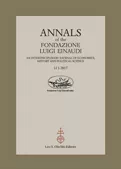Research interpreting the collapse of the transatlantic empires as a global conflict fostered by inter-imperial rivalries – an age of ‘imperial’ revolutions – has contributed much in understanding the ‘Atlantic’ reconfiguration of two centuries ago. This reconfiguration is characterized by civil wars within the various empires, part of a general conflict between tradition and revolution, between supporters of the old empires and their opponents. Such interpretation fits both the Hispano-American independences and the concomitant Anglo-American War of 1812, the so-called Second War of Independence. This essay intends to show some points of contact between these two civil conflicts in the global war. It analyses the repercussions the War of 1812 had on conflicts between ‘loyalists’ and ‘independentists’ in South America, and formal and informal aspects of the struggle between Britain and the United States for influence over the area – how their ‘imperial’ nets expanded informally on land and sea through the use of agents as consuls, merchants and sailors, active largely between Río de la Plata and Chile. The American Pacific coast acquires a new centrality here, in the analysis of U.S. policy in Hispanic America and in the geography of the Atlantic reconfiguration, illuminating neglected details in the ‘geopolitics of Latin-American independence’.



